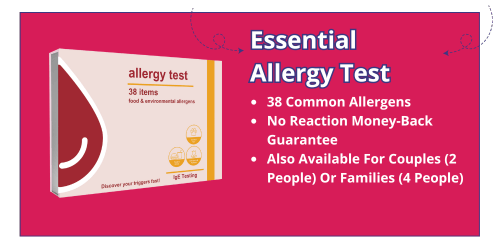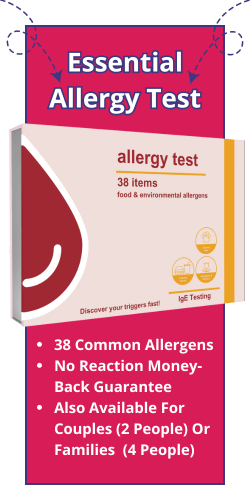.Our allergy test will assess you for 38 items to which you could potentially be allergic. They are the most common allergies and the ones you’re most likely to be living with. However, for a very, very select few unfortunate individuals, the symptoms associated with an allergy are brought about by incredibly rare allergens.
Here, we take a look at the weird world of rare allergies.
Water
Over half of the body is water. As much as 60% of what makes you you is h2o. Staying hydrated is essential to maintaining your health. Water is everywhere; we need it to wash, it is in the foods we eat and indeed everything you drink. Water is, essentially, unavoidable.
This is a somewhat inconvenient truth for people living with a condition called aquagenic urticaria. A 2011 report acknowledged fewer than 100 cases worldwide of an allergy to water.
Due to the rarity of the condition, it often goes undetected or incorrectly diagnosed as an allergy to chemicals in water. Sufferers have to take very short, infrequent cold showers to stay clean. They also have to restrict their consumption of foods containing high amounts of water, such as fruits and vegetables. Drinking water is swapped out for diet soft drinks. The water content of tears and sweat also means that sufferers have to limit their exposure to physical exertion, heat, and emotionally charged situations.
For some, antihistamines have an effect, but with potential for anaphylactic shock, a water allergy is deadly serious. To identify allergies that may be putting your life at risk, you should take an allergy test.
Exercise

One of the oldest jokes in the book is no joke for some people. Who amongst us hasn’t sought an excuse to get out of a jog? But the truth is, if you sucked it up and hit the tarmac, you come out of the other side feeling healthier. For some people, however, exercise can cause fainting, vomiting, and hives.
Believed to affect about 2% of people, an allergy to exercise is caused by antibodies releasing chemicals to fight a threat. These chemicals cause the symptoms above and many more. The allergy appears to be on a spectrum, with some people suffering worse symptoms than others. For those at the more severe end of the spectrum, there is a genuine risk of death, and, when doing exercise, they’re encouraged to carry a life-saving adrenaline shot and always exercise with a partner.
Touch
Roughly 4 percent of the population is living with an allergy that makes doing anything incredibly tricky. Dermographism translates literally as ‘skin writing’ and is classed as an allergy to pressure on the skin. This means the slightest touch of anything to a sufferer’s skin can result in symptoms such as an itchy hive reaction. The term’ skin writing’ is used quite literally as sufferers can use their fingernail to write on their skin.
Dermographism can be aggravated by heat, using a towel to dry off, pressure from clothing, clapping, and many other applications of touch.
The cause of dermographism isn’t fully understood and can be caused by a non-allergic reaction as well as an allergy. Teens and young adults appear to be particularly susceptible to dermatographia. As an allergy test is unable to identify this particular condition, it is diagnosed by a doctor who will usually apply pressure to the tongue to observe any adverse reaction.
Money
We’ve all got that friend who seems to be allergic to putting their hands in their pocket to pay for a round. However, for some, they can’t get coins and notes out of their hands fast enough. And for these people, handling cash for the shortest of periods can leave behind an itchy, red rash.

An allergy to money can be broken down into different conditions. The most common reaction is an allergic reaction to the nickel in coins. Most of the world’s coins are composed of a combination of different metals and, often, this includes nickel. Nickel is particularly predisposed to corrosion and, when it comes into contact with human sweat, can cause contact dermatitis.
For others, irritation can be brought about when handling paper money. This can be from one of two allergies. The US mint is secretive about the ink they use to print money as it enables counterfeiters to produce believable fake notes. However, this does expose allergy sufferers to a potentially unidentified condition that they can’t find. As well as the ink, some people have a problem with the paper the ink is applied to. Though, this isn’t believed to be an allergic reaction but a symptom of the moisture-wicking qualities of the paper used. This can dry out the hands and cause breaking and cracking of the skin.







